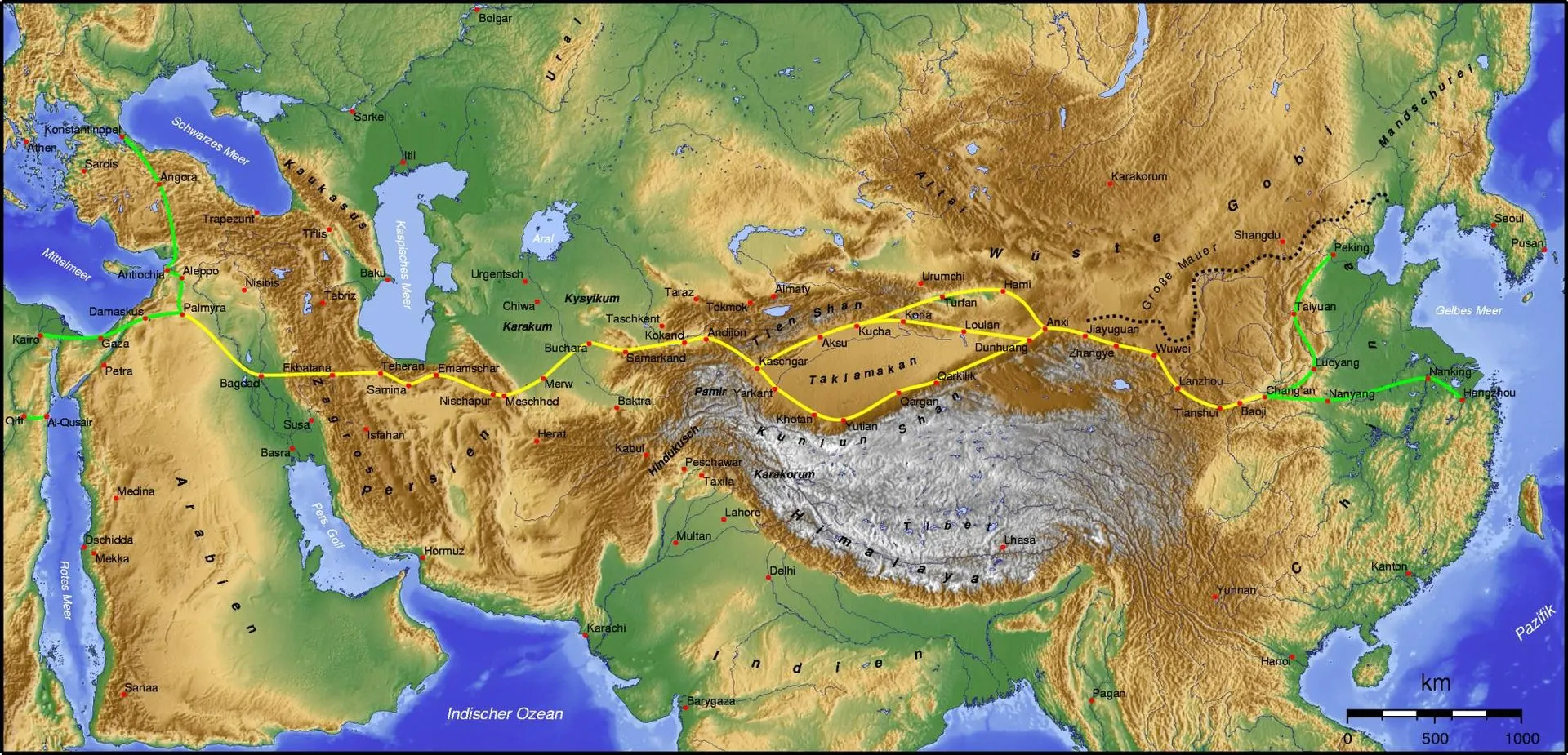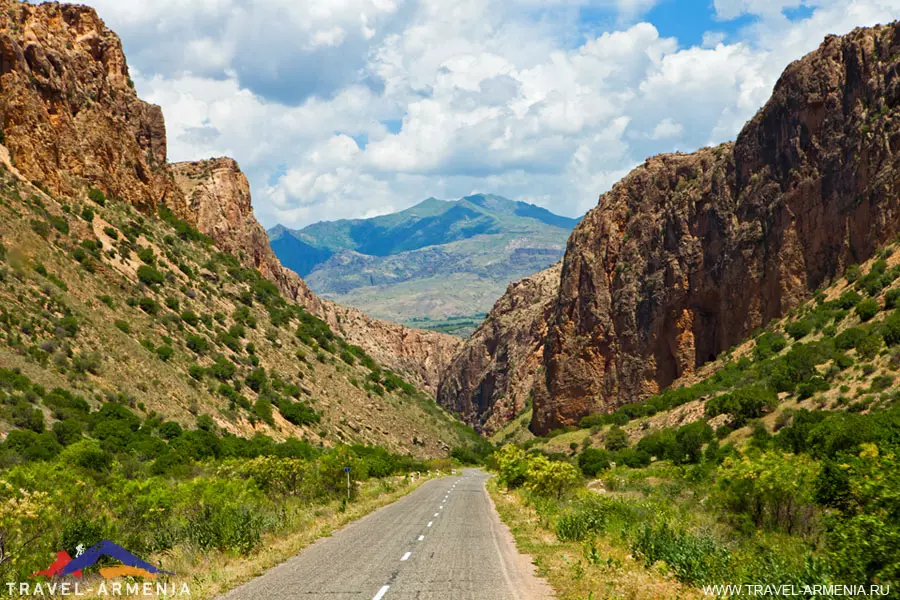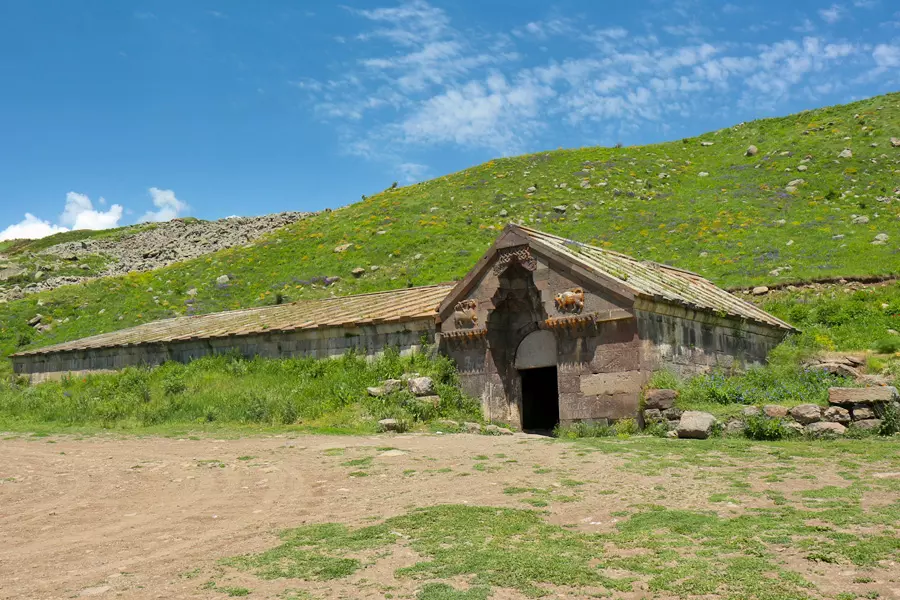For thousands of years, Armenia’s system of trade routes was linked to the famous Great Silk Road, which ran from China through India, Central Asia, Iran, Mesopotamia to Asia Minor, Eastern and Western Europe, and the Mediterranean basin.

Armenia’s contribution to the history of the Silk Road was determined by the export of its own raw materials and products, the import of goods both domestically and in transit to other countries, participation in international monetary circulation, the maintenance of well-maintained and protected trade routes, the conclusion of international trade agreements, and the development of legal documents.
Interestingly, the “Silk Road” is actually a relatively new term, and for most of their long history, these ancient roads had no specific name. In the mid-19th century, the German geologist Baron Ferdinand von Richthofen dubbed the trade and communication network Die Seidenstrasse (the Great Silk Road).
Numerous manuscripts and archaeological research have uncovered evidence of a highly developed civilization in the Armenian Highlands, confirming that in ancient times, Greater Armenia stood alongside advanced civilizations and ancient peoples now lost to history.
Greater Armenia, which included Sophene, Lesser Armenia, and, from the 1st century BC, Part of Cilicia, located at the crossroads of trade routes between West and East, initially occupied a favorable geographical position, which facilitated the exceptionally early development of its political, cultural, and economic relations with the countries of the ancient world. With a developed economy, Armenian kings formed political alliances with neighboring states, fostering trade and economic ties and developing cultural relations with the countries of Europe, Asia, and Africa.

The Silk Road opened in the second century BC, when cultural and trade exchanges between the Roman and Chinese empires intensified. A continuation of this route was the so-called Southern Road, which ran through Bactria to Mesopotamia and Syria.
The trade route passed through Armenia – Artashat – and from there to the Black Sea ports. Artashat was an international trade exchange point. In the 5th century, Artashat was replaced by Dvin, the capital of Armenia. Dvin was a trade route linking China, Central Asia, and Iran with the Byzantine capital of Constantinople.
The main commodity exchanged was Chinese silk and silk products. Incidentally, trade between Armenia and China has been documented since the 1st century BC. Global trade through Armenia developed significantly in the 5th and 6th centuries.
In the 9th and 10th centuries, the Armenian cities of Artsn, Ani, and Kars began to play a significant role in global trade. Excavations in Ani have yielded examples of Chinese silk, porcelain, Persian ceramics, and paints.
Not only were Armenian goods in great demand, but so were the craftsmen.
Trade along the Silk Road grew particularly rapidly in the 13th and 14th centuries, when the Mongols gave new impetus to the development of trade relations. It was during this time that the Armenian Kingdom of Cilicia became a transit trade zone.
In the mid-15th century, with the development of maritime trade routes, the Great Silk Road, which had existed for 15 centuries, ceased to exist.

Centuries have passed, and much has changed on the world map, but it’s worth noting that one of the main routes of the road runs through what is now Armenia, along the Ararat Valley. Furthermore, the Orbelian caravanserai, which served as a rest stop for merchants passing through Armenia along the Great Silk Road, remains in Armenia, in the Vayots Dzor region.

Travel Armenia invites you to join our tours to Armenia, experience an ancient civilization, and travel part of the Silk Road with us.